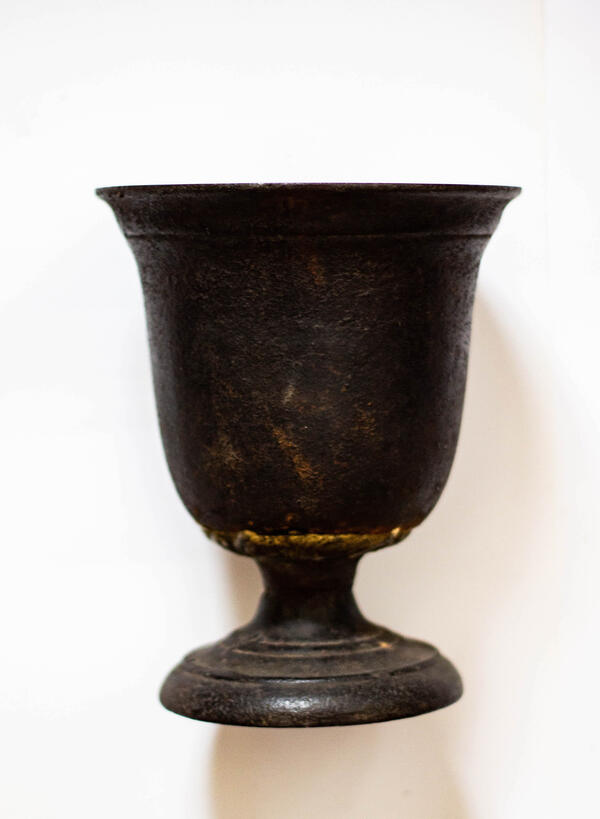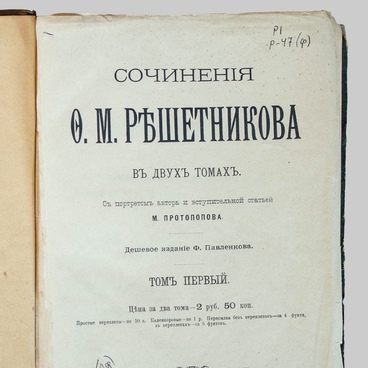The old Russian name for a hand-held (tabletop) mortar made of bone, horn, glass, or porcelain is igot. Grain was usually ground with care in such a mortar, as it could crack from a blow. Wooden or metal mortars were used for crushing and were called ‘stupa’. According to some etymologists, the word ‘stupa’ goes back to the verb ‘stupat’ (to step) and literally means the place where one ‘steps’ with the pestle. ‘Pest’ (pestle), in turn, literally means ‘something used for crushing and grinding’ (grain).
A cast iron mortar featured in the collection of the Fyodor ReshEtnikov’s Museum, could serve to grind particularly hard products. In order achieve quality grinding, the mortar was filled no more than to one third. Otherwise, the ground product will spill out.
The Eastern Slavs had many beliefs and rituals associated with the mortar and pestle. For example, a woman was not allowed to leave the pestle in the mortar overnight, so as to prevent evil spirits from using it. In the popular mind, mortar and pestle were considered erotic symbols. The mortar was seen as representation of the female womb, while the pest stood for the male part. Due to this symbolism, mortar and pestle were widely used during wedding rituals. For example, at weddings in Polesie (Ukraine), a mortar was dressed up in a woman’s dress, and a pestle in a man’s outfit. In some villages, a matchmaker, who has come to the house of a young woman chosen for a man, attempted to ensure successful matchmaking by circling a mortar around herself. On the wedding day in southern Russia, women “ground” water in a mortar with a pestle to ensure a successful wedding night for the newlyweds.
Mortars and pestles were used in various games with an erotic overtone. For example, young people played the “wedding game”, in which a boy and a girl were led around a mortar that represented a church altar stand, where service books or icons were placed.
Mortar was also used in traditional medicine. It was believed that one could crush disease in a mortar, “pound” a sick animal into a healthy one. The use of mortar for treatment is associated with the belief that it is easier to get rid of an illness by crushing it into small pieces.
A cast iron mortar featured in the collection of the Fyodor ReshEtnikov’s Museum, could serve to grind particularly hard products. In order achieve quality grinding, the mortar was filled no more than to one third. Otherwise, the ground product will spill out.
The Eastern Slavs had many beliefs and rituals associated with the mortar and pestle. For example, a woman was not allowed to leave the pestle in the mortar overnight, so as to prevent evil spirits from using it. In the popular mind, mortar and pestle were considered erotic symbols. The mortar was seen as representation of the female womb, while the pest stood for the male part. Due to this symbolism, mortar and pestle were widely used during wedding rituals. For example, at weddings in Polesie (Ukraine), a mortar was dressed up in a woman’s dress, and a pestle in a man’s outfit. In some villages, a matchmaker, who has come to the house of a young woman chosen for a man, attempted to ensure successful matchmaking by circling a mortar around herself. On the wedding day in southern Russia, women “ground” water in a mortar with a pestle to ensure a successful wedding night for the newlyweds.
Mortars and pestles were used in various games with an erotic overtone. For example, young people played the “wedding game”, in which a boy and a girl were led around a mortar that represented a church altar stand, where service books or icons were placed.
Mortar was also used in traditional medicine. It was believed that one could crush disease in a mortar, “pound” a sick animal into a healthy one. The use of mortar for treatment is associated with the belief that it is easier to get rid of an illness by crushing it into small pieces.



